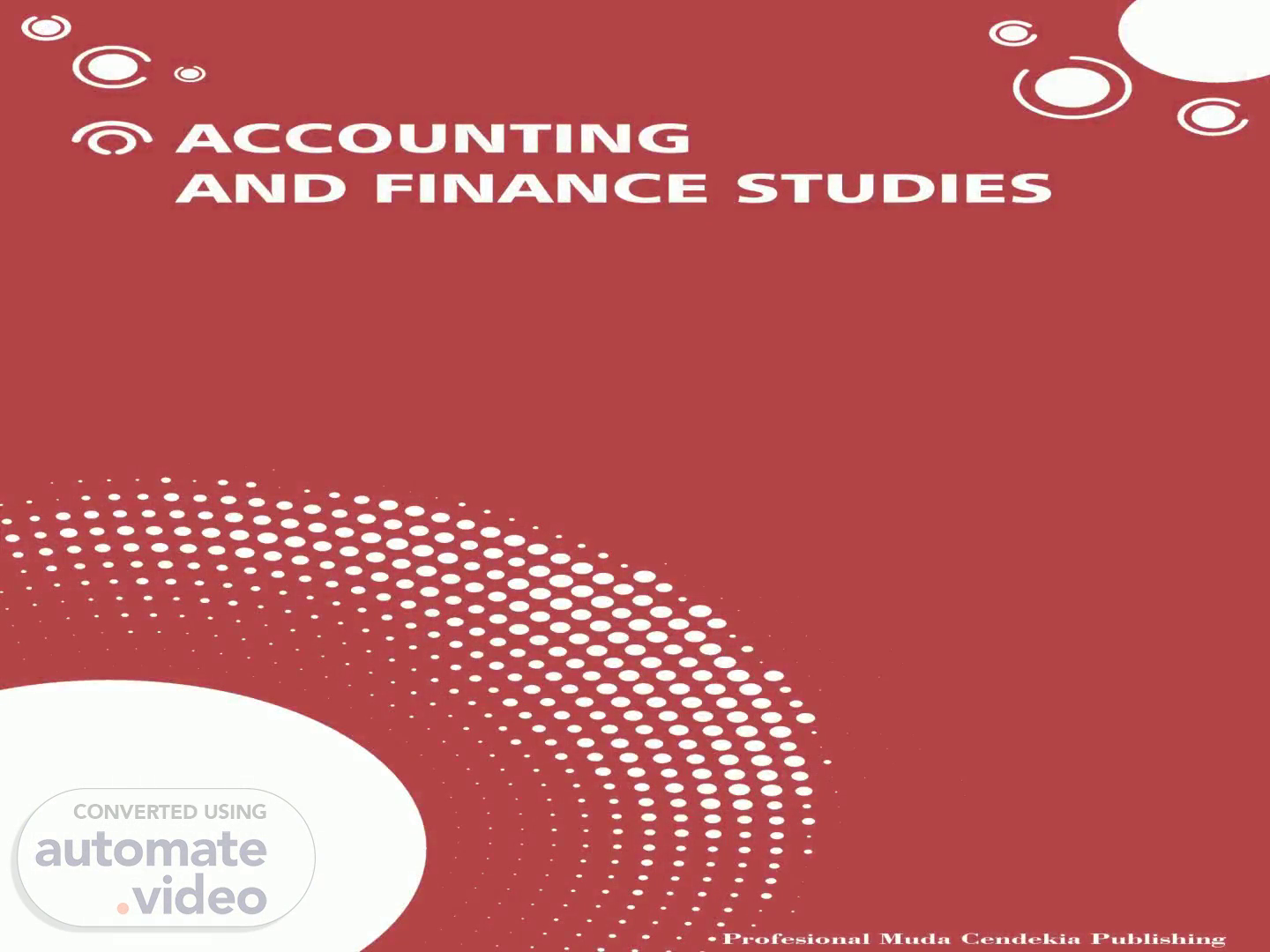Scene 1 (0s)
ACCOUNTING AND FINANCE STUDIES • Principals of Accounting
Scene 2 (6s)
Introduction to Accounting. Learning Objectives: • To understand the working of business organizations. • To understand the Importance and Objectives ....
Scene 3 (16s)
UNDERSTANDING BUSINESS ORGANIZATIONS • Business orgns provide goods and services in order to earn profit. • ....
Scene 4 (25s)
What is Accounting?. Accounting – The Language of Business Accounting is the information system that... measures....
Scene 5 (34s)
Definition of accounting?. What is Accounting? • Accounting is often called the language of Business. • Accounting, as an information system, is th....
Scene 6 (44s)
Accounting Information System. The Accounting Information System INPUT PROCESS OUTPUT Economic events •Recording C....
Scene 7 (52s)
Definition of Accounting.. Definition of Accounting • The American Institute of Certified Public Accountants (AICPA) defines accounting as “the a....
Scene 8 (1m 2s)
Objectives of Accounting. OBJECTIVES OF ACCOUNTING To maintain accounting records. To calculate the results of operations To ascertain the finan....
Scene 9 (1m 11s)
USERS OF ACCOUNTING INFORMATION Internal Users: External Users: Management group: Financing group: Board o....
Scene 10 (1m 20s)
Branches /Classification of Accounting Accounting Financial Cost Management O ....
Scene 11 (1m 28s)
Forms of Business Organization Sole Proprietorship Single individual Unlimited Liability Partnership Firms ....
Scene 12 (1m 36s)
Financial Statements Profit and Loss A/c Statement of financial performance Balance sheet Statement of financi....
Scene 13 (1m 45s)
Assets What a business “owns” Probable future economic benefits Examples Cash Investments Buildings Plan....
Scene 14 (1m 53s)
Liabilities. Liabilities What a business “owes” Probable future sacrifices of economic benefits Examples Loans payable ....
Scene 15 (2m 2s)
Revenues. Revenues • They are amounts received or to be received from customers for sales of products or services. – sales ....
Scene 16 (2m 11s)
Expenses. • They are amounts that have been paid or will be paid later for costs that have been incurred to earn revenue. – s....
Scene 17 (2m 22s)
Owners Equity. Owner’s Equity • It is what‟s left of the assets after liabilities have been deducted (Residual interest of owners) –....
Scene 18 (2m 32s)
Accounting Equation. The Accounting Equation Assets = Liabilities + Owner’s Equity Economic Claims to Resources ....
Scene 19 (2m 39s)
Transactions that Affect Owner’s Equity OWNER’S EQUITY OWNER’S EQUITY INCREASES ....
Scene 20 (2m 47s)
Generally Accepted Accounting Principles - Meaning • Accounting principles may be defined as the set of c....
Scene 21 (2m 55s)
The Accounting Equation Assets are the economic resources of a business that are expected to produce a ben....
Scene 22 (3m 4s)
Classification of Accounts • There are some asset accounts? – Cash – Notes Receivable – Accounts Receivable – ....
Scene 23 (3m 12s)
Classification of Accounts • There are some owner‟s equity accounts? – Capital or owner‟s interest in the business – Withd....
Scene 24 (3m 21s)
Classification of Accounts • Real Account = Debit –What comes in Credit- what goes out • Personal....
Scene 25 (3m 29s)
The Accounting Elements Probable future economic benefits obtained or controlled by a particula....
Scene 26 (3m 37s)
The Accounting Elements Probable future sacrifices of economic benefits arising from present obligations ....
Scene 27 (3m 45s)
The Accounting Elements The residual interest in the assets of an entity that remains after d....
